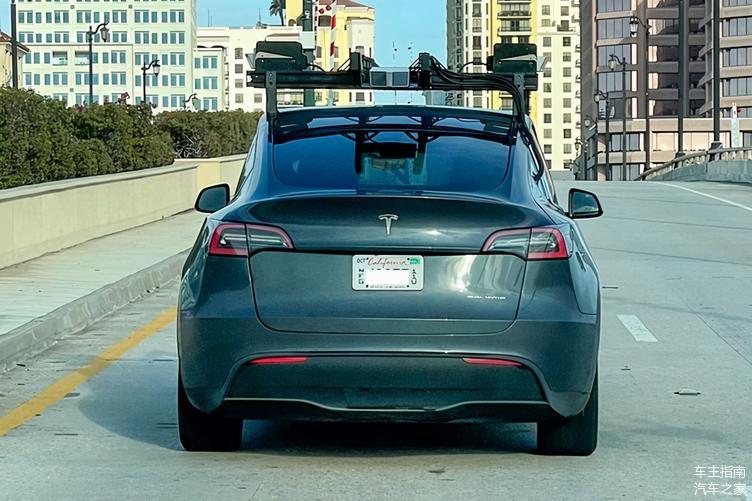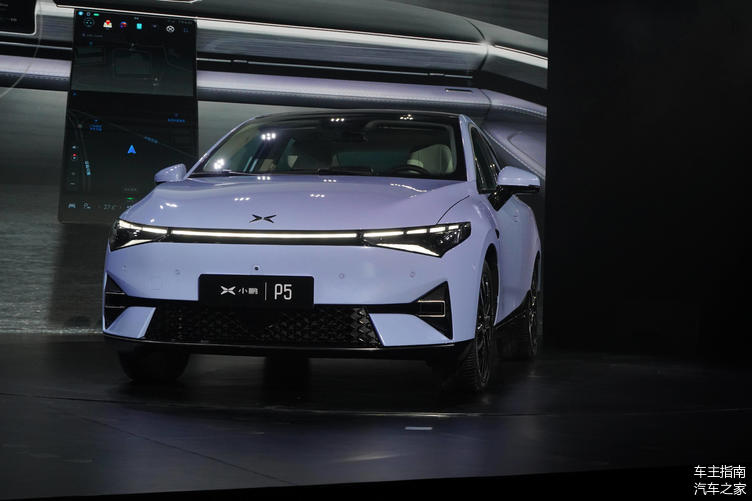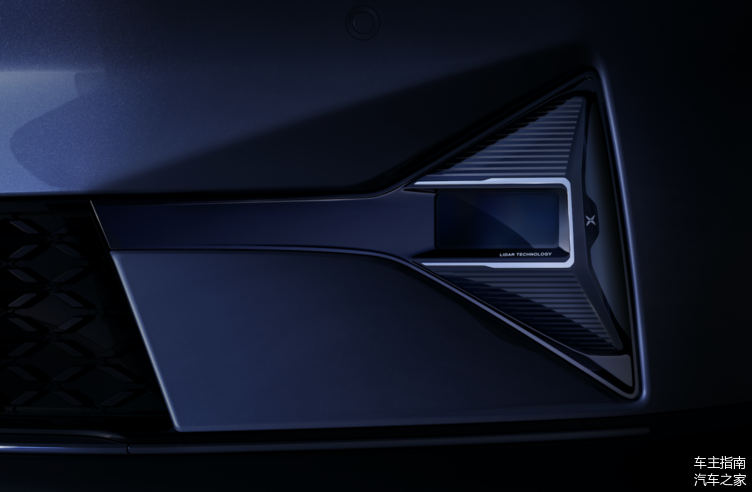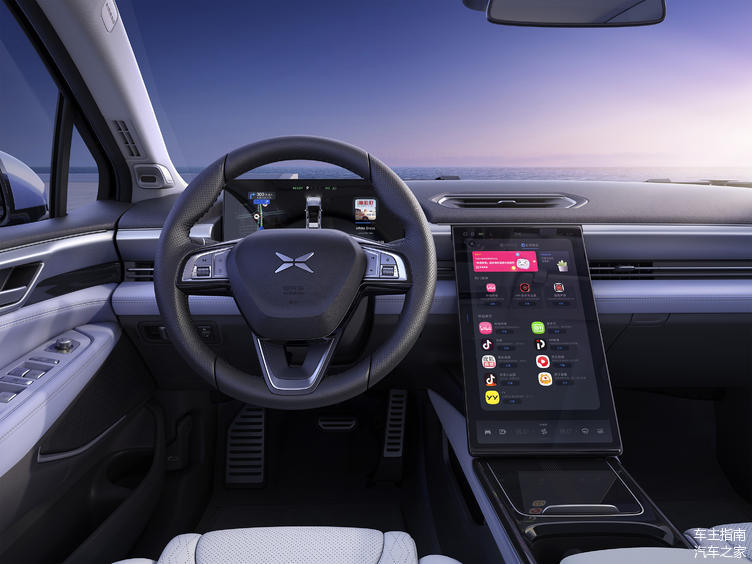"Anyone who uses LiDAR is a fool", "A fool's choice", "Using LiDAR is doomed to fail", "Using LiDAR is a futile effort"......
Elon Musk, who has publicly dissed LiDAR many times, has recently broken his promise? Recently, Grayson Brute, an American autonomous driving technology expert, captured a Tesla Model Y in Palm Beach, Florida, which was equipped with LiDAR and used for road testing. Brute said, "I think they are 99.9% using Luminar's LiDAR technology. Luminar told me that this is their technology."

Grayson Brute Social Media
Then there were foreign media reports that Tesla signed a contract with LiDAR company Luminar to use laser sensor technology for testing and development. People familiar with the matter also said that as part of the agreement, Luminar sold Tesla the LiDAR sensor used in the Model Y test car.

Compared with Musk's "flip-flopping", domestic automakers, especially the new car-making forces, have always been loyal "followers" of LiDAR. This year (2021) is even called the first year of LiDAR and the first year of autonomous driving. Xiaopeng, Arcfox, Weilai, etc. have successively joined the LiDAR camp.
What is LiDAR?
At present, all the family cars on the market that have certain driving assistance functions (such as cruise control, ACC, parking assistance, etc.) use sensors to sense the surrounding environment. There are three main types of sensor hardware: camera, millimeter wave radar, and ultrasonic radar. They are equivalent to the eyes of the car and can sense the environment.
With the development of smart car autonomous driving technology, the current perception hardware capabilities are limited and more equipment is needed to meet the requirements. LiDAR is a very important hardware, which is equivalent to equipping the eyes of the car with a pair of telescopes. The main advantages of this "telescope" are: it can accurately perceive the three-dimensional information of the surrounding environment, with high detection accuracy and long distance, and can accurately identify the specific outline and distance of obstacles. This is what the "old three" sensors do not have.

The technical principles of LiDAR could take a whole day to explain, but it can actually be simply summarized using junior high school physics knowledge: using the principle of light reflection, the vehicle's LiDAR element emits light, which is reflected by an object, and the object's outline and distance can be determined through the position and time of the emission.

However, LiDAR also has its disadvantages: due to its short wavelength, it will be greatly disturbed in bad weather such as rain, fog, wind and sand, and may even fail to work. In addition, LiDAR has always had another disadvantage: it is expensive. Therefore, LiDAR is not an all-round player, and it cannot "go it alone" in actual applications. It is a complementary combination with the "old three" hardware, and it is a team effort.
Why do we need LiDAR?
In short, LiDAR has more advantages than disadvantages, so it is popular. To give a direct example: when a car encounters a stationary obstacle while driving at high speed, it cannot be identified due to the limited detection distance of the camera and the limitations of the physical characteristics of the millimeter-wave radar itself; the result is that AEB (automatic emergency braking) fails. With the addition of LiDAR, this problem can be solved.

This also confirms what was mentioned earlier, that these types of perception hardware are integrated and complementary, each performing its own functions and cooperating with each other, rather than one replacing the other.
Of course, these functions of LiDAR have been available since its birth, but why has it only started to be mass-produced and applied now? The answer is: the cost has dropped. In the past, a mechanical LiDAR could easily cost hundreds of thousands of RMB or even millions of RMB, but now many LiDAR suppliers can reduce the cost to less than $1,000, and the price is still falling.
Therefore, LiDAR is now entering the automotive industry!
The first LiDAR vehicle
The Xpeng P5, which will be launched in the third quarter of this year and delivered in the fourth quarter, is the "world's first mass-produced laser radar smart car." This compact pure electric car is equipped with two laser radars, one below the left and right headlights.

Xpeng P5
These two LiDARs named HAP come from Livox, a brand under DJI. HAP is customized for Xiaopeng based on Livox's Horiz series products. It is also Livox's first LiDAR for automobiles. The cost price of HAP is very competitive, about several thousand RMB per unit.

In addition, HAP's overall performance is also good. Its detection distance for low-reflectivity objects (@10%) is 150 meters, the lateral field of view can reach 120 degrees, the angular resolution is 0.16°*0.2°, and the point cloud density is equivalent to that of a 144-line LiDAR. The 150-meter range is the same as Huawei's 96-line LiDAR, which is a mainstream range performance level.
This laser radar is a hybrid solid-state type, and uses a prism scanning solution (double prism) that is rare in the industry. This solution has more laser emitters, can achieve higher point cloud density and longer detection distance. In addition, it has very high requirements for reliability technology and has a high technical content.

The two laser radars of Xiaopeng P5 enable it to achieve urban NGP, which is a higher level of autonomous driving assistance function than the current high-speed NGP of Xiaopeng P7.
The XPilot 3.5 software and hardware system of the Xiaopeng P5 integrates 13 high-definition cameras, 5 millimeter-wave radars, 12 ultrasonic sensors, 2 laser radars, a total of 32 sensors and a set of high-precision positioning units (GNSS+IMU). The vehicle can assist the driver in performing driving tasks according to the navigation route and has the ability to pass through traffic lights autonomously. In urban road conditions, the Xiaopeng P5 can autonomously overtake, follow the car in a customized manner, and pass through the island. It can also dynamically and automatically adjust the speed limit according to the ground/road conditions.

This can be regarded as an L3 level autonomous driving function. When the urban NGP function is launched, Xiaopeng P5 will be the first smart car in China to achieve high-level urban autonomous driving assistance.
More than LiDAR
The biggest highlight of the Xiaopeng P5 is that it is equipped with a laser radar and realizes the urban NGP function, but this car is far more than that. Its intelligent interactive function is also a highlight. In terms of car hardware, the Xiaopeng P5 is equipped with Qualcomm Snapdragon SA8155P automotive-grade chip, and its computing power is also the top among the current car chips. In addition, this car has 128GB of storage space and 12GB of ultra-high RAM. Matching the hardware is the Xmart OS 3.0 system that comes standard with the entire series. This software system supports continuous dialogue, semantic interruption, semantic rejection, dual-tone zone voice recognition, etc. You can even use voice to change lanes and overtake.

Xmart OS 3.0 is more powerful than the recently updated 2.6 version. Interestingly, this system can also be connected to DJI drones. The P5's large screen inside the car can be used as a controller for DJI drones, and you can easily operate the drone on it, and even use the voice assistant Xiao P to control the drone for shooting.
In addition, the length of the Xiaopeng P5 is 4808mm and the wheelbase is 2768mm. Although it is a compact body, the special features of electric vehicles allow for a spacious rear space. Compared with fuel vehicles, the size of the P5 is equivalent to that of an A+ class sedan, and its rear space is equivalent to that of a B class car.

No further information has been revealed about the battery and power yet, but official information shows that the P5's range can reach 600km+, placing it in the first tier in terms of range.
Last words
Autonomous driving is not a temporary craze, but the final form of human automotive development. We used to think that autonomous driving was a fantasy, but now it is getting closer and closer to us. At this stage, if we want to achieve high-level autonomous driving assistance functions, LiDAR is a very important piece of the puzzle. As the cost of LiDAR becomes lower and the technology becomes more advanced, in the future we will be able to experience convenient and safe intelligent driving on family cars worth more than 100,000 yuan, and the Xiaopeng P5 will be a starting point.
Previous article:Infineon Technologies launches new radar sensor for cockpit monitoring systems
Next article:Can LiDAR also “zoom”? RoboSense M1’s intelligent “gaze” function is now available!
- Popular Resources
- Popular amplifiers
- Car key in the left hand, liveness detection radar in the right hand, UWB is imperative for cars!
- After a decade of rapid development, domestic CIS has entered the market
- Aegis Dagger Battery + Thor EM-i Super Hybrid, Geely New Energy has thrown out two "king bombs"
- A brief discussion on functional safety - fault, error, and failure
- In the smart car 2.0 cycle, these core industry chains are facing major opportunities!
- The United States and Japan are developing new batteries. CATL faces challenges? How should China's new energy battery industry respond?
- Murata launches high-precision 6-axis inertial sensor for automobiles
- Ford patents pre-charge alarm to help save costs and respond to emergencies
- New real-time microcontroller system from Texas Instruments enables smarter processing in automotive and industrial applications
- LED chemical incompatibility test to see which chemicals LEDs can be used with
- Application of ARM9 hardware coprocessor on WinCE embedded motherboard
- What are the key points for selecting rotor flowmeter?
- LM317 high power charger circuit
- A brief analysis of Embest's application and development of embedded medical devices
- Single-phase RC protection circuit
- stm32 PVD programmable voltage monitor
- Introduction and measurement of edge trigger and level trigger of 51 single chip microcomputer
- Improved design of Linux system software shell protection technology
- What to do if the ABB robot protection device stops
- Allegro MicroSystems Introduces Advanced Magnetic and Inductive Position Sensing Solutions at Electronica 2024
- Car key in the left hand, liveness detection radar in the right hand, UWB is imperative for cars!
- After a decade of rapid development, domestic CIS has entered the market
- Aegis Dagger Battery + Thor EM-i Super Hybrid, Geely New Energy has thrown out two "king bombs"
- A brief discussion on functional safety - fault, error, and failure
- In the smart car 2.0 cycle, these core industry chains are facing major opportunities!
- The United States and Japan are developing new batteries. CATL faces challenges? How should China's new energy battery industry respond?
- Murata launches high-precision 6-axis inertial sensor for automobiles
- Ford patents pre-charge alarm to help save costs and respond to emergencies
- New real-time microcontroller system from Texas Instruments enables smarter processing in automotive and industrial applications
- Chapter 5 GD32VF103C START PWM
- The WR703N router is flashed with the openwrt system. After the router is started, you need to manually connect to the WAN port to access the Internet.
- [ESK32-360 Review] + Audio Output
- Cross-Product Automatic Frequency Control Algorithm
- [Qinheng RISC-V core CH582] Feasibility of using solid-state relays to control the heating tube of the heater
- When the stm32 is powered on and set to a low level, is there a high level glitch at the moment of reset?
- Inter-core communication mechanism of multi-core processor
- Summary of performance indicators of integrated operational amplifiers
- 【Top Micro Intelligent Display Module】Three: Interface editing tool SGTools
- C2000 LaunchPad - SIC Interrupt Reception

 TC75W57FK(TE85L)
TC75W57FK(TE85L)











 京公网安备 11010802033920号
京公网安备 11010802033920号